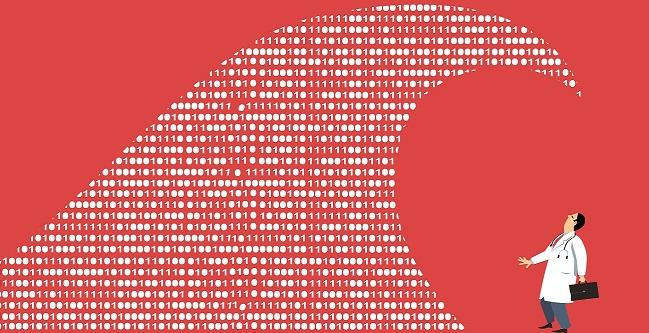Artificial Intelligence Mines ECG Data to Estimate ‘Physiologic Age’
Future research will focus on what a heightened ECG-predicted age means for disease prevention, and on what action is needed.

“The ECG can tell us a lot more about an individual than simply about their heart health, and neural networks and artificial intelligence techniques can allow for that,” senior study author Suraj Kapa, MD (Mayo Clinic, Rochester, MN), told TCTMD. “The potential for an electrocardiogram to give us information about perhaps the physiologic age of an individual—not just how many years have passed since they were born—might allow us to rapidly and cost-effectively identify those who might be at risk of problems in the future more quickly.”
This is not the first time AI has shown potential in mining ECG data for hidden health clues. Kapa’s research group alone has published two AI-enhanced studies this year to screen for asymptomatic left ventricular dysfunction and A-fib in ECGs. “We've taken an interest in what these neural networks and artificial intelligence approaches might offer us in terms of not just recapitulating what physicians already do—people are trying to develop AI to automatically read chest X-rays or electrocardiograms—but seeing if we can actually use these techniques to look deeper into an electrocardiogram to understand elements of disease or pathology beyond what our typical algorithms and human-based approaches actually show us,” he explained.
High Accuracy, More Research
For this study, published online in Circulation: Arrhythmia and Electrophysiology, Kapa along with Zachi Attia, MSc (Mayo Clinic,), and colleagues used ECG data from 499,727 adults to create, through training, a convolutional neural network (CNN)—a type of deep-learning algorithm—to identify information like age and sex. The CNN was then verified with ECG data from 275,056 patients.
The model was able to predict sex with 90.4% accuracy overall, but this increased to 93% when testing was done only in those younger than 45 years. Additionally, the model was able to classify age into four groups with an accuracy of 71.6%.
Further, in an analysis of 100 patients with longitudinal data available, a greater than 7-year deviation in the predicted age from the chronologic age indicated a greater likelihood of preexisting comorbidities including prior diagnoses of MI, low ejection fraction, coronary disease, hypertension, and A-fib (P < 0.01).
The future applicability of using ECG-predicted age is promising, Kapa said, especially given how quick and easy a test it is to perform. “Can we use it to say whether or not somebody might be afflicted by certain diseases that just haven't been diagnosed yet? Or might it reflect a situation where we need to investigate further for other incident diseases like diabetes or hypertension?” he asked. “The vast majority of the population in fact aren't ‘patients,’ and so there's a lot more undiagnosed disease than there is diagnosed and having an easy way of knowing in whom to investigate for the evidence of disease becomes something very important, especially with rising costs in the healthcare system.”
Kapa said his team is now examining the potential reasons for why someone’s ECG-predicted age might be driven above their chronological age as well as any added morbidity or mortality risk that may come along with that phenomenon. “Do we have to do cholesterol panels on them? Glucose panels? CT scans?” he said, adding that new results are likely to be published within the next 6 months. For now, this is still a tool in development, Kapa cautioned, but “it has a potential role in creating a new kind of science of how to [get more out of] a fairly cheap diagnostic test.”
Yael L. Maxwell is Senior Medical Journalist for TCTMD and Section Editor of TCTMD's Fellows Forum. She served as the inaugural…
Read Full BioSources
Attia Z, Friedman PA, Noseworthy PA, et al. Age and gender estimation using artificial intelligence from standard 12 lead ECGs. Circ Arrhythm Electrophysiol. 2019;12:e007284.
Disclosures
- Attia and Kapa report no relevant conflicts of interest.


Comments